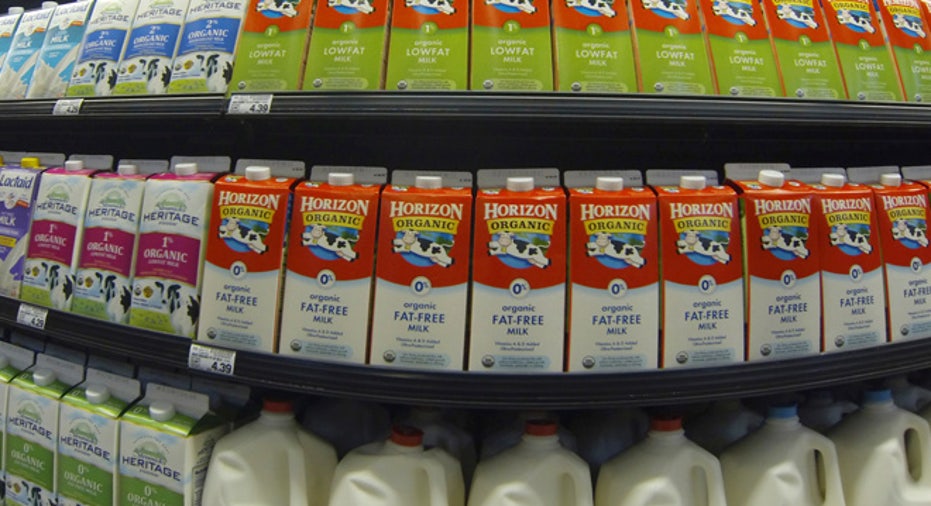Can a Cash Grocery Budget Save You Money?

As I mentioned in my last article, I experimented with paying cash only for my October groceries. I had only one goal in mind: Spend less on groceries so I could save more money each month. Well, my little experiment opened a whole can of worms.
The Experiment
Basically, I always try to keep my grocery spending in check, but I usually don't limit quantity or variety of food based on the budget.
With that in mind, I think it is important how I picked my budget of $500. I didn't look at my past spending. I didn't do any research to see what a normal amount is for a family of five. Nope, $500 just sounded good. And it sounded easy enough to stay under budget. I wanted it to be a challenge, but I didn't want it to be too difficult, either.
Also, the $500 was for any food, whether I bought it at a restaurant or intended to eat it at home. We also raised some chickens and I even included their -- how do I say this? -- "processing" costs in with our $500.
The experiment didn't end the way I expected. I failed. I spent around $600 -- and I really tried hard to keep my spending in check.
What I learned and what I changed
Since my husband is a farmer, October is a really busy month for us. Knowing that I would usually be juggling all the kids, kitchen clean-up, and the bedtime routine by myself made me jump on the meal-planning bandwagon again. As always, meal-planning helps me save money because I waste less.
For the first two weeks of the month, I kept to my normal spending habits, except for one thing: We didn't eat out at all. Even though I did look at prices, bought store brands, checked different sized packages for the best per-unit value, I was aware of what I spent, but I didn't change what I would normally buy.
Around the two-week mark, the chickens were "processed" at over $50 more than I had estimated. Also, butter jumped to $4.49 per pound. It is usually priced at around $3 per pound, and we eat a lot of butter. My grocery envelope got thinner, and I got a little panicky.
Once my panic kicked in, I made several changes.
1. Instead of buying the usual groceries, I started to use up items from our pantry, from our freezer, and from our garden. I used cookbooks and allrecipes.com to find recipes that used the ingredients I was trying to get rid of.
2. We also didn't buy some things. I remember craving enchiladas one day and pulling a can of enchilada sauce off the shelf. I looked at the $3.29 price and placed it back on the shelf, thinking that I could make enchilada sauce more cheaply than that. My son also wanted some special snacks for school. Although I bought them once, I also said no to snacks or other expensive foods.
3. I couldn't buy in bulk as much. This was an insight I didn't expect. Normally, when a grocery store runs a great sale on something, such as their $2 per pound sale on butter, I buy as much as we won't waste and as much as I am able. I was buying a pound of butter a week at one time instead of buying a few pounds at a time. If budgets are very tight, I can see how someone wouldn't be able to take advantage of sales. If someone has only $2 to spend on butter and wants to buy butter on sale for $2/pound, they can only buy one pound. Next week, when it goes back up to $4, they will have lost the opportunity to save.
4. I cut back. Speaking of butter, I have a waffle recipe that allows you to pick how much butter you want to add: 1/4 c. of butter for okay waffles or 1 c. of butter for deliciously, crispy, buttery waffles. Since I was only buying one pound of butter per week, I didn't want to use up half on one meal, so I didn't use as much.
5. I deferred my purchases. I think it's only fair to point out that I just didn't make some purchases; instead, I counted down the days until November 1 when I could load up my grocery cart with those items. That's not really saving money, but …
The results
As I mentioned, I went over my budget by about $100. Research after the fact, showed that I probably set my budget too low. According to 2013 BLS.gov data, consumer units (a family is considered to be a consumer unit) spent $10,579 on food annually. That comes out to $882 per month. And this handy chart from the USDA showed that our family would spend $649.50 on the thrifty plan.
I found the experience to be a teensy bit stressful. But with just $30 in my envelope on October 18, I needed more money to feed my family. For me, it was not a big deal. I had cash in my checking account and access to a credit card, if I needed it.
But that opened up the larger question: What does the single mother do who has $30 to her name and her two kids and still has six days until payday? How does she feed them?
So I reached out to my friends, asking if anyone had experienced something like that. And guess what? I got a couple of interviews. I'll share what I learned from those next time.
For this week, however, have you ever used a cash-only food budget? Have you had some really hard times related to food?
The original article can be found at GetRichSlowly.org:Can a cash grocery budget save you money?



















